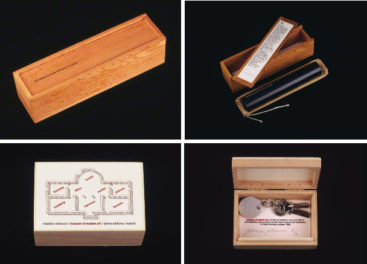
Booker T. Washington, 1905–45, Harris & Ewing. Library of Congress, Prints and Photographs Division, LC-H25- 14111-B
While the records of the art dealers M. Knoedler & Co. enhance our understanding of the development of taste and collections in the 20th century, they also incidentally reveal the initiatives of important historical figures that may not have obvious associations with the firm. Filed under the name of the correspondent or gathered in thematic folders labeled “Charity,” there are a number of letters from schools and nonprofit organizations seeking philanthropy from the important firm.
Booker T. Washington
Some of these pleas shed light on significant politicians, such as those from Franklin D. Roosevelt, writing in the 1920s on the letterheads of his law firms, first Emmet, Marvin, & Roosevelt and then Roosevelt & O’Connor, seeking financial support from Knoedler for the Boy Scout Foundation, an organization that Roosevelt was actively involved with for many years.
Booker T. Washington, the founding principal of the Tuskegee Normal and Industrial Institute for the Training of Colored Young Men and Women (now Tuskegee University) and an experienced fundraiser, also corresponded with Knoedler, seeking support from the firm.
Student Enrichment
Washington did not ask for direct financial support, but rather requested a donation of artworks for the school. For years Washington had carefully constructed the image of Tuskegee as a culturally sophisticated institution, forming the campus around the Arts and Crafts ideals held by many of its northern benefactors.
In a group of three letters written to Knoedler between 1913 and 1915, Washington conveys his conviction of the importance of art to education. As he explains, “good pictures serve a good purpose in helping to educate students who are a hard-working, self-denying, set of young men and women.” Knoedler agreed to fulfill Washington’s request and contribute reproductions of paintings to Tuskegee.

Letters from Booker T. Washington to M. Knoedler & Co. New York, 1913–1915. The Getty Research Institute, 2012.M.54
Fitting Subject Matter
The annotations on Washington’s letters indicate which artworks staff at the Knoedler firm considered appropriate for an educational setting. The firm leaned toward supplying engravings of paintings with historical topics, such as a portrait of President Abraham Lincoln and works by George Henry Boughton that emphasized important events in the early history of America. Knoedler was particularly drawn to Broughton’s well-known painting The Return of the Mayflower (ca. 1870), which was exhibited at the Goupil Gallery.

Letter from Booker T. Washington to M. Knoedler & Co. New York, May 12, 1913. The Getty Research Institute, 2012.M.54
In 1915, Knoedler accepted to send works to Washington again and in this instance the firm chose a portrait of President William McKinley, who had visited Tuskegee in 1898. The firm also selected an American landscape scene and images highlighting courtly manners, such as Boughton’s Age of Gallantry (1870). Both Knoedler and Washington agreed that these works depicted fitting subjects that would both educate Tuskegee’s students and beautify the school’s walls.

The Age of Gallantry, James Scott after George H. Boughton

Copy of letter sent to Booker T. Washington from Domestic Letter Book, January 9, 1915–February 27, 1915, p. 190. The Getty Research Institute, 2012.M.54
The records of the art dealers M. Knoedler & Co. contain more information about philanthropy requests received by the firm as well as many other interesting episodes in the history of the American art market. Future scholarship will be able to assess the philanthropy role played by the Knoedler firm in comparison to those of other dealers, such as dealer Samuel P. Avery. The large and complex Series VI. Correspondence (1,626 boxes!) was cataloged in partnership with the National Endowment for the Humanities. With the finding aid accessible online, these stories await discovery by scholars.
The Knoedler archive is available for study by qualified researchers. To consult online selected digitized stock books, sales books and commission books in the archive, visit the Getty Research Institute’s Primo’s online search page.
For the related archive of another dealer, Duveen Brothers, which has recently been digitized, see the Getty Research Institute’s online search page.

See all posts in this series »




Comments on this post are now closed.